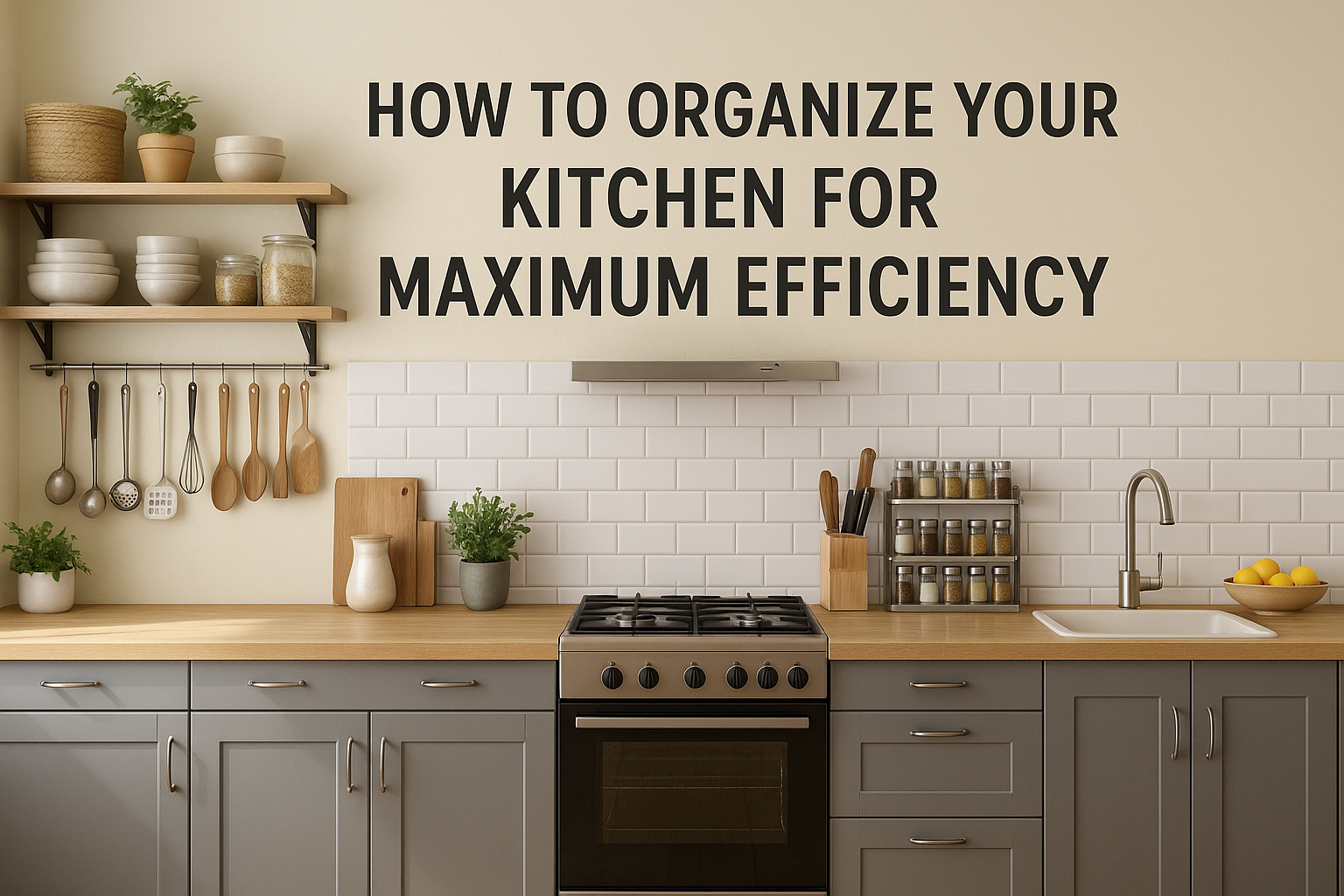An organized kitchen is more than just a tidy space; it’s the foundation for smoother cooking, easier cleaning, and better use of your time. When every item has its place, meal prep becomes quicker, and you avoid the frustration of searching for utensils or ingredients. Whether your kitchen is large or small, the key to maximum efficiency lies in strategic planning, smart storage solutions, and consistent upkeep.
Assess Your Current Kitchen Layout
Before making changes, take a good look at your kitchen. Note which areas feel cluttered or disorganized and identify your biggest daily frustrations. Is it difficult to find the right pot or pan? Are your spices scattered in different cabinets? Understanding your problem areas will guide your reorganization efforts.
The Work Triangle Principle
Professional kitchen designers often use the “work triangle” concept, which places the sink, stove, and refrigerator in a triangular layout for maximum efficiency. Even if you can’t physically rearrange your kitchen, you can still apply this principle by keeping essential tools and ingredients within easy reach of these three areas.
Group Items by Function
Storing items based on how and where you use them saves time and prevents unnecessary movement around the kitchen. Keep cooking utensils near the stove, cutting boards close to your prep area, and mugs near the coffee station. Grouping items by function also makes it easier to maintain organization.
Declutter and Simplify
Before adding new storage solutions, remove items you don’t use regularly. Donate duplicate utensils, outdated appliances, or mismatched containers. The fewer items you own, the easier it will be to keep your kitchen organized.
Use Vertical Storage Solutions
Cabinet space is precious, and vertical storage can help you maximize it. Install shelf risers to double the usable space inside cabinets. Use wall-mounted racks for pots, pans, and utensils. Magnetic strips can hold knives, freeing up counter space and keeping them within reach.
Drawer Organization
Drawers are prone to becoming chaotic if left unchecked. Invest in drawer dividers to separate utensils, cutlery, and small tools. Deep drawers can be used for storing pots and pans, with adjustable dividers to prevent items from shifting.
Maximize Cabinet Space
In addition to shelf risers, consider pull-out shelves or lazy Susans to make deep cabinets more accessible. Store heavy appliances on lower shelves and lighter items higher up. Transparent bins can keep smaller pantry items together while making them easy to find.
Create Zones for Efficiency
Dividing your kitchen into zones helps streamline your workflow. Common zones include:
- Cooking Zone: Stove, oven, pots, pans, cooking utensils.
- Prep Zone: Cutting boards, knives, mixing bowls, spices.
- Cleaning Zone: Sink, dishwasher, dish soap, cleaning cloths.
- Storage Zone: Pantry, dry goods, canned food.
- Beverage Zone: Coffee maker, mugs, tea, sweeteners.
Organize the Pantry
A well-organized pantry saves time and prevents food waste. Store similar items together, such as baking supplies, canned goods, and snacks. Use clear containers for dry goods like pasta, rice, and flour. Label everything so you know exactly what you have and when to restock.
Keep Counters Clear
Cluttered counters not only look messy but also reduce your workspace. Keep only essential appliances on the counter, such as the coffee maker or toaster. Store everything else in cabinets or shelves when not in use.
Utilize the Inside of Cabinet Doors
The inside of cabinet doors offers hidden storage potential. Install small racks or hooks to hold measuring spoons, pot lids, or cleaning supplies. This keeps frequently used items close at hand without taking up shelf space.
Organize the Refrigerator
A messy fridge leads to forgotten leftovers and wasted food. Designate sections for specific types of items: dairy, meat, produce, beverages, and condiments. Use clear bins to group smaller items, and rotate older food to the front to ensure it gets used.
Use Lazy Susans
Lazy Susans are excellent for corners and deep shelves, allowing you to easily access all items without having to dig through clutter. They work well for spices, condiments, and small bottles.
Install Under-Cabinet Storage
If you have empty space under your cabinets, consider adding hooks for mugs, shelves for spices, or hanging baskets for fruit and vegetables. This keeps items accessible while freeing up counter space.
Keep Cleaning Supplies Handy
Store dish soap, sponges, and other cleaning supplies under the sink in a bin for easy access. If you have children or pets, choose storage options with safety locks to prevent accidents.
Rotate and Review Regularly
Organization is not a one-time task. Every few months, review your kitchen setup and adjust as needed. Rotate items so nothing gets forgotten, and remove anything you no longer use.
The Benefits of an Organized Kitchen
A well-organized kitchen saves time, reduces stress, and makes cooking more enjoyable. You’ll also save money by avoiding duplicate purchases and reducing food waste. Most importantly, an organized kitchen supports healthy eating habits because meal preparation becomes easier and more inviting.
Final Thoughts on Kitchen Efficiency
Organizing your kitchen for maximum efficiency is about creating a space that works for you and your daily habits. By decluttering, grouping items by function, and making smart use of every inch, you can transform your kitchen into a place where cooking is a pleasure rather than a chore. Start with small changes, maintain your system, and enjoy the lasting benefits of a well-ordered kitchen.

